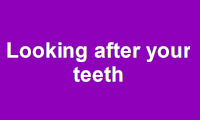Treatments
Interdental Brushing
Looking after your teeth
It is important that between visits to your dentist, you look after your teeth well. Good oral hygiene is essential to reduce bad breath and reduce the build up of plaque and tartar that can lead to gum disease. It will also reduce the need for fillings and other future treatment.
Your dentist and hygienist will advise you how to brush properly, whether you use an electric or manual toothbrush, and how to use floss and interdental brushes to keep teeth and gums healthy.
Power Brushing
Manual Brushing
Bad Breath
In most cases of persistent bad breath (halitosis), the smell comes from a build-up of germs (bacteria) within the mouth. These are in food debris, in plaque and gum disease, or in a coating on the back of the tongue. Good oral hygiene will often solve the problem. That is, regular teeth brushing, cleaning between the teeth, cleaning the tongue, and mouthwashes
Gum Disease
Gum disease occurs when plaque and tartar build up occurs on the teeth. Gum disease results in receding gums which, left untreated, can result in weakened or even lost teeth.
In most cases, gum disease is prevented by looking after your teeth with a good regular oral hygiene regime which includes brushing, flossing and regular visits to your dentist and dental hygienist
Onlay
White Inlay
Amalgam to Composite Procedure
Fillings, Inlays and Onlays
Fillings replace parts of the tooth that have been lost through wear, damage or decay. Your dentist will carefully remove any damage or decay and restore the tooth to its original size and shape with a strong and durable filling.
Where the nature of the damage or decay makes a filling impractical, the decayed or weak part of the tooth can be removed and replaced with an inlay or onlay - a replacement made to fit into the space left by the removed part of the tooth
Crowns & Bridges
This treatment is used to replace missing teeth/tooth. Rot-form endosseous implants are usually made out of titanium and are to support the placing of dentures, bridges and crowns to restore teeth.
Crowns are a type of dental restoration, which will completely re-cap a damaged tooth or implant. There are several materials from which crowns can be made from to make a life-like appearance some of which can be porcelain and gold alloy.
Bridges are another type of dental restoration, Bridges is a permanent replacement for teeth and link onto an adjacent teeth, it is then cemented to ensure it is secure. Bridges usually require preparation as the dentist will have to make reduction on the teeth supporting the bridges to allow it to fit securely and without discomfort. Bridges also come in several materials the same as Crowns. However depending on the reduction needing to be done on the supporting teeth it can have an impact on what material is used.
Implants
A dental implant (also known as an endosseous implant or fixture) is a surgical component that interfaces with the bone of the jaw or skull to support a dental prosthesis such as a crown, bridge, denture, facial prosthesis or to act as an orthodontic anchor. The basis for modern dental implants is a biologic process called osseointegration where materials, such as titanium, form an intimate bond to bone
Root canal treatment is a dental procedure used to treat infection at the centre of a tooth (the root canal system). It's also known as 'endodontics'.
The infection is caused by bacteria that live in the mouth and invade the tooth. This can happen after:
tooth decay
leaky fillings
damage to teeth as a result of trauma, such as a fall
Tooth structure
A tooth is made up of two parts. The crown is the part of the tooth that's visible in the mouth. The root extends into the bone of the jaw, anchoring the tooth in position.
Teeth also consist of:
enamel – the hard outer coating
dentine – a softer material that supports the enamel and forms most of the tooth
cementum – a hard material that coats the root's surface
dental pulp – the soft tissue at the centre of the tooth
The root canal system contains the dental pulp and extends from the crown of the tooth to the end of the root. A single tooth can have more than one root canal.
Tooth Extraction
Gum disease can loosen or severely damage a tooth. A tooth that is severely damaged may need to be removed. Your dentist or a surgeon who specializes in surgeries of the mouth (oral and maxillofacial surgeon) can remove a tooth.
Before removing your tooth, your dentist will give you a local anesthetic to numb the area where the tooth will be removed. A stronger, general anesthetic may be used, especially if several or all of your teeth need to be removed. General anesthetic prevents pain in the whole body and will make you sleep through the procedure.
After the tooth is removed, you may need stitches. You can gently bite down on a cotton gauze pad placed over the wound to help stop the bleeding. The removed tooth can be replaced with an implant, a denture, or a bridge. A bridgecamera.gif is a replacement for one or more (but not all) of the teeth and may be permanent or removable.
Dentures are removable false teeth made of acrylic (plastic) or metal. They fit snugly over the gums to replace missing teeth and eliminate potential problems caused by gaps.
Gaps left by missing teeth can cause problems with eating and speech, and teeth either side of the gap may grow into the space at an angle. Sometimes all the teeth need to be removed and replaced.
You may therefore need either:
complete dentures (a full set), which replace all your upper or lower teeth, or
partial dentures, which replace just one or a few missing teeth
Dentures can help prevent the above problems and, if complete dentures are needed, can improve the appearance of your smile, fill out your face and give you confidence.
$('#843858').cycle({
fx: 'none',
cleartypeNoBg: 'false',
pause: '',
timeout: 0,
slideResize: 0,
containerResize: 0,
fit: true,
onPrevNextEvent: function(isNext, zeroBasedSlideIndex, slideElement) {
changeStack('#843858',-1);
},
before: function (curr, next, opts) {
var zeroBasedSlideIndex = Number(opts.nextSlide);
$(this).animate({opacity: 0},0)
$(this).animate({opacity: 1},{queue: false, duration: 700, easing: "linear"})
},
after: function onAfter(curr, next, opts) {
var zeroBasedSlideIndex = Number(opts.nextSlide);
$('.scroll-pane').jScrollPane();
},
speedIn: 0,
speedOut: 1
} );
Website designed by Comart Dental. Site last updated 20th February 2017







